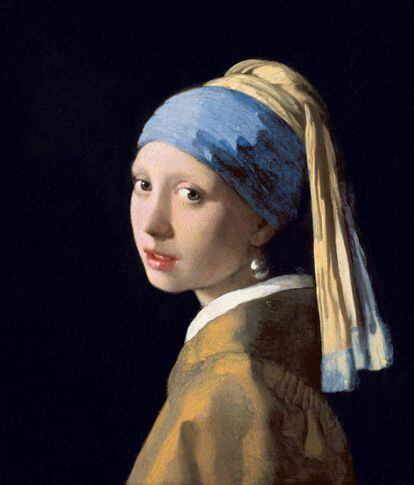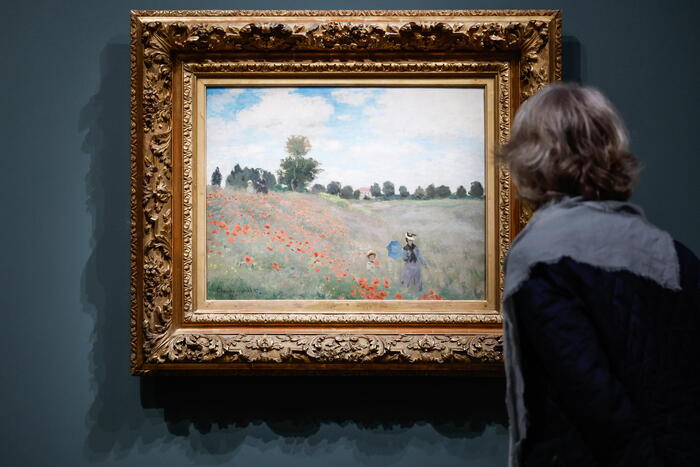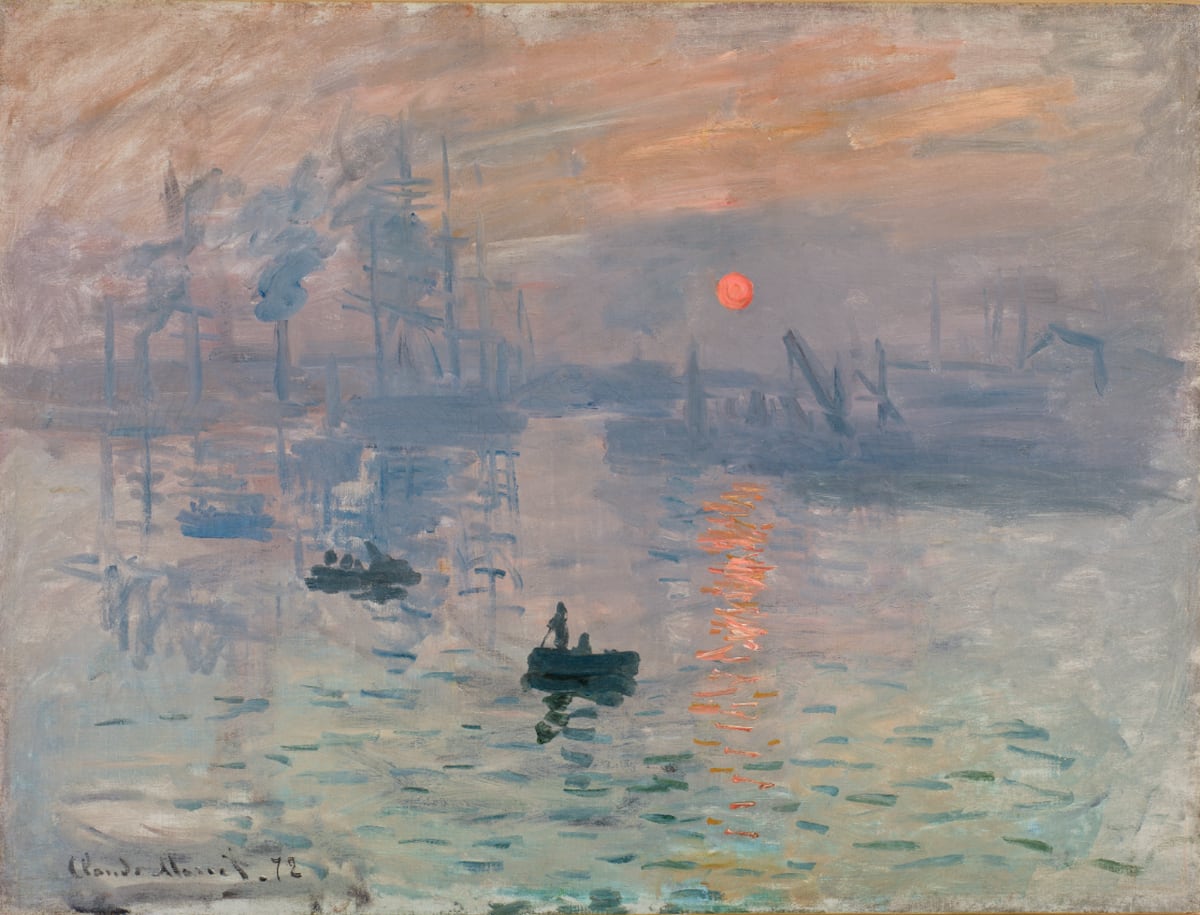'The Narrow Street', by Johannes Vermeer, preserved in the Rijksmuseum, in Amsterdam, the Netherlands.
In the Dutch Golden Age of painting, the specialization of painters by genre made domestic scenes one of the most sought-after subjects by a wealthy bourgeoisie. The demand for paintings that reflected the privacy of their owners did not lower their quality, and canvases and tables were filled with interiors that mixed seclusion with everyday tasks such as ordering clean clothes. In that moment of artistic boiling, the painter Johannes Vermeer (Delft, 1632-1675), perhaps the least prolific of his colleagues, managed to portray the benefits of home, seduction and love, with realism and an enigmatic point. Despite being one of the most famous firms of its time, it fell almost into oblivion at his death and only about 35 of his works are known today, according to the Rijksmuseum in Amsterdam.In the competitive world of large exhibitions, the room is preparing the largest retrospective dedicated to the artist in its history, with the help of the Mauritshuis gallery in The Hague. The Netherlands has only seven works by Vermeer, and the exhibition hopes to bring together "for the first and last time" all the paintings around the world that are in a position to be transferred.
More information
The Rijksmuseum discovers the genesis of Rembrandt's 'The Night Watch' in a sketch under oil
Born, raised and buried in Delft, around the age of 22 Vermeer began to paint biblical and mythological subjects, also very much in vogue at the time.
They were pieces that required prior historical knowledge, and for some clients they were superior to still lifes or everyday images.
However, he preferred home intimacy and at the age of 24 he made his debut in this field.
Most of his models are realistically painted women, and although they are within four walls, they have their own personality.
Also a mysterious point without the artifice of allegories.
When you capture exteriors, as in
La callejuela
or
La vista de Delft
, treats them with the same harmony that he seemed to seek throughout his work.
The size of the retrospective, which will require the collaboration of art galleries inside and outside Europe, led the Rijksmuseum to announce already last December that it will open in 2023. Among the pieces that will be presented there are titles preserved in the country, such as
The Young Woman de la perla
and
La lechera
, and others who will come from abroad, such as
The Geographer
and
Girl reading a letter in front of an open window
.
Intimate moments bathed in virtuous games of light for a kind of encapsulated Vermeer year in Amsterdam.
'The Girl with a Pearl Earring', by Vermeer, kept in the Mauritshuis in The Hague, the Netherlands.MAURITSHUIS
"He is one of our most famous painters along with Rembrandt, Van Gogh and Mondrian, and we will be able to bring him closer to a new generation of visitors and researchers," said Taco Dibbits, director of the Rijksmuseum. The last major meeting with Vermeer in the Netherlands took place in 1996 at the Mauritshuis gallery, with 22 works. It was the most visited in its history. Today,
The Girl with a Pearl Earring
and
The View of Delft
hang opposite each other in its main room. An effort of these characteristics would be orphaned without the face of this girl, anonymous and reproduced a thousand times, and that Martine Gosselink, director of the Mauritshuis gallery, describes as “the most famous Dutch woman in the world”.
The view of Delph
and
Diana and their nymphs
The other paintings in the gallery's permanent collection will also be taken to the Rijksmuseum in 2023.
The latter has four pieces of its own:
The Milkmaid
,
The Alley
,
Woman Reading a Letter
and
The Love Letter
, executed between 1650 and 1670.
Work 'View of Delft' by Johannes Vermeer Mauritshuis, The Hague
Delft, the artist's hometown, was very prosperous in the 17th century but was partly destroyed by the explosion of a municipal powder magazine in 1654. With a Calvinist majority at the time, Catholicism was tolerated, and the painter converted to marry Catharina Bolnes , a young catholic. They had at least 11 children, and he supplemented his income as an art dealer and appraiser, although at his death he left behind many debts. The approximately 35 paintings that are preserved are few compared to contemporaries such as Rembrandt, whose official catalog consists of 340. This is due to his early death, at the age of 43, and perhaps also to his way of working. Meticulous and leisurely, he also used very expensive pigments, hence the small size of many of his creations. He particularly liked the natural overseas. Extracted from finely ground lapis lazuli,a semi-precious stone obtained in Afghanistan, other artists only used it to achieve a brilliant blue effect in some areas of the painting. In his case, it stands out in the apron of
The milkmaid
and there are traces in fabrics, porcelain and even marble tiles.
And the pearls, of course.
Very popular in his time, they appear in 18 of his works, according to the Mauritshuis gallery, although the most remembered is that of his young and unknown model.
Like Rembrandt, light dominates Vermeer's compositions, but where the former plays with chiaroscuro, the other prefers bright mornings and open windows.
Work 'The Milkmaid', by Johannes Vermeer, kept in the Rijksmuseum, Amsterdam.
In the seventeenth century, the War of the 80s, 1568-1648, continued its course, the revolt led by William of Orange against Philip II of Spain, who led to the birth of the Netherlands and Belgium. Although Vermeer was only 16 when it was over, he did not reflect the echo of that time, but the secrets of an urban life. The documents in the gallery in The Hague mention the debate over whether the artist relied on the camera obscura - the forerunner of the photographic camera - to paint with such precision. “He suggested the reflection of light based on innumerable points of paint, a technique that leads one to wonder if he did it that way. But would an artist capable of reproducing perspectives and light so well have needed it? ”Is his answer.
In 2023, an exhibition on the historical and cultural context in which the painter was immersed will open at the Prinsenhof Museum in Delft. In your case, you will be able to see works by your contemporary neighbors, in addition to the famous porcelain and carpets. The latter may seem strange, but in the Dutch tradition, which has survived in some places today, there were tapestries on the tables. Some of his paintings reproduce them in great detail, such as
The Music Lesson
- also called
Gentleman and Lady Playing the Virginal
(a type of harpsichord) -, where it reaches the ground. Its red tones and elaborate motifs contrast with a white jug placed on top. It belongs to the Royal Collection and is in Buckingham Palace (London). In
The Geographer
, the scholar supports his maps on another patterned cover.
Hangs in the Städel Museum, Frankfurt (Germany).
On the left, the 'Girl reading a letter', by Johannes Vermeer, painted around 1657 and exhibited in the Gemäldegalerie Alte Meister in Dresden, before Cupid was uncovered.
On the right, the same painting with Cupid partially uncovered.
Among the works expected to be seen for the first time in the Netherlands stands out
Girl reading a letter
(Gemäldegalerie Alte Meister, Dresden, Germany).
Once restored, it was presented last August with the large Cupid that it originally included on the wall portrayed.
Thanks to X-rays, art historians have known since 1979 that the Roman god of love in the form of a naked child was there, and it was believed that Vermeer himself had covered it up.
In 2017, information collected in Germany with the help of more advanced methods showed that this was not the case: it had been painted over decades after his death.
Due to this, it was decided to return the work to its original state, a work supervised under the microscope to avoid damage.
For experts, the presence of Cupid in the composition reinforces the romantic character of the letter.
On the table, the fruit of a platter slides over an upholstery fabric.



/cloudfront-eu-central-1.images.arcpublishing.com/prisa/VBZMURLLFRAH3DCSBFQHOAECPI.jpg)





